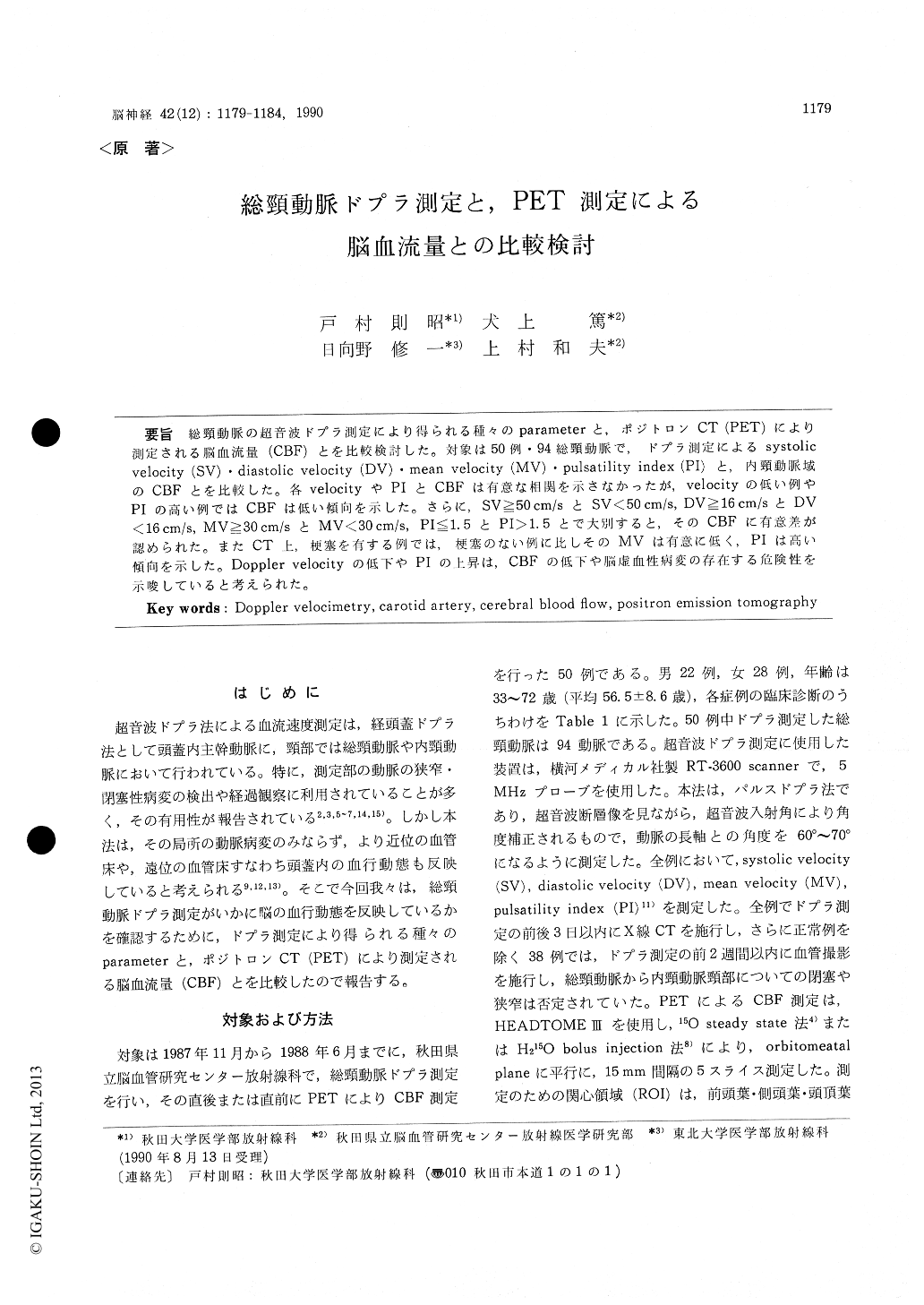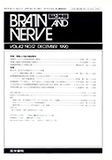Japanese
English
- 有料閲覧
- Abstract 文献概要
- 1ページ目 Look Inside
総頸動脈の超音波ドプラ測定により得られる種々のparameterと,ポジトロンCT(PET)により測定される脳血流量(CBF)とを比較検討した。対象は50例・94総頸動脈で,ドプラ測定によるsystolicvelocity(SV)・diastolic velocity(DV)・mean velocity(MV)・pulsatility index(PI)と,内頸動脈域のCBFとを比較した。各velocityやPIとCBFは有意な相関を示さなかったが,velocityの低い例やPIの高い例ではCBFは低い傾向を示した。さらに,SV≧50cm/sとSV<50cm/s, DV≧16cm/sとDV<16cm/s, MV≧30cm/sとMV<30cm/s, PI≦1.5とPI>1.5とで大別すると,そのCBFに有意差が認められた。またCT上,梗塞を有する例では,梗塞のない例に比しそのMVは有意に低く,PIは高い傾向を示した。Doppler velocityの低下やPIの上昇は,CBFの低下や脳虚血性病変の存在する危険性を示唆していると考えられた。
The cervical carotid Doppler velocity is deter-mined by the cardiovascular function, hemodyna-mic characteristics of proximal vascular beds, the carotid artery, and the distal vascular beds, i. e., cerebral circulation. If the former three factors remain constant, cervical carotid Doppler veloci-metry reflects the cerebral circulation. The purpose of this report is to study whether the cervical carotid Doppler velocimetry reflects cerebral circu-lation or not. Parameters measured by the com-mon carotid Doppler velocimetry were compared with cerebral blood flow (CBF) in the internal carotid arterial distribution measured by positron emission tomography (PET) in 50 patients, aged from 33 to 72 years old (mean : 56.5±8.6). These subjects were 14 with cerebral infarction, 12 with no abnormality (normal volunteers), 5 with brain tumor, 2 with normal pressure hydrocephalus, 3 with spinocerebellar degeneration, and so on. CBF was measured by the 15O-gas steady state method or H215O autoradiographic method using a HEADTO-ME III scanner. Subsequently, pulsed Doppler flow velocimetry of the common carotid artery was per-formed using a RT-3600 scanner which employed a 5-MHz transducer, and systolic velocity (SV), dia-stolic velocity (DV), mean velocity (MV), and pulsatility index (PI) were measured. Cerebral an-giography was performed in every patient except for normal volunteers, and it demonstrated no evi-dence of stenoocclusive lesions in the cervical caro-tid artery. X-ray computed tomogram (CT) was also performed in all patients. We compared CBF in the internal carotid arterial distribution with SV, DV, MV, and PI. Doppler flow parameters (SV, DV, MV, and PI) and CBF in the ipsilateral internal carotid arterial distribution showed no significant correlations, however, patients havingdecreased Doppler velocity and/or increased PI had a tendency to have a lower CBF. Group of patients having decreased velocity (SV<50 cm/s, DV<16 cm/s, MV<30 cm/s) and/or increased PI (>1.5) showed lower CBF than the group of the other patients. There was a statistical difference of CBF between patients having SV≧50 cm/s and SV<50 cm/s, DV≧16 cm/s and DV<16 cm/s, MV_≧ 30 cm/s and MV<30 cm/s, and PI≦1.5 and PI>1.5. The MV in patients having infarction in the inter-nal carotid arterial distribution was lower than that in patients having no infarctions (p<0.01). Thus the Doppler velocimetry of the common carotid artery was confirmed to provide semi-quantitative parameters of cerebral circulation.

Copyright © 1990, Igaku-Shoin Ltd. All rights reserved.


